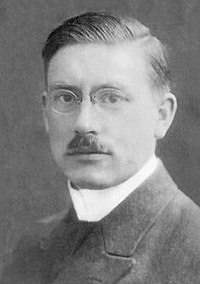
Back نموذج ديباي Arabic Model de Debye Catalan Debye-Modell German Modelo de Debye Esperanto Modelo de Debye Spanish Modèle de Debye French מודל דביי HE Modello di Debye Italian デバイ模型 Japanese 디바이 모형 Korean
This article reads like a textbook. (January 2024) |
This article needs additional citations for verification. (January 2024) |

| Statistical mechanics |
|---|
 |

In thermodynamics and solid-state physics, the Debye model is a method developed by Peter Debye in 1912 to estimate phonon contribution to the specific heat (heat capacity) in a solid.[2] It treats the vibrations of the atomic lattice (heat) as phonons in a box in contrast to the Einstein photoelectron model, which treats the solid as many individual, non-interacting quantum harmonic oscillators. The Debye model correctly predicts the low-temperature dependence of the heat capacity of solids, which is proportional to [clarification needed] – the Debye T 3 law. Similarly to the Einstein photoelectron model, it recovers the Dulong–Petit law at high temperatures. Due to simplifying assumptions, its accuracy suffers at intermediate temperatures[clarification needed].
- ^ Pohl, R. O.; Love, W. F.; Stephens, R. B. (1973-08-01). Lattice vibrations in noncrystalline solids (Report). Cornell Univ., Ithaca, N.Y. (USA). Lab. of Atomic and Solid State Physics.
- ^ Debye, Peter (1912). "Zur Theorie der spezifischen Waerme". Annalen der Physik (in German). 39 (4): 789–839. Bibcode:1912AnP...344..789D. doi:10.1002/andp.19123441404.
